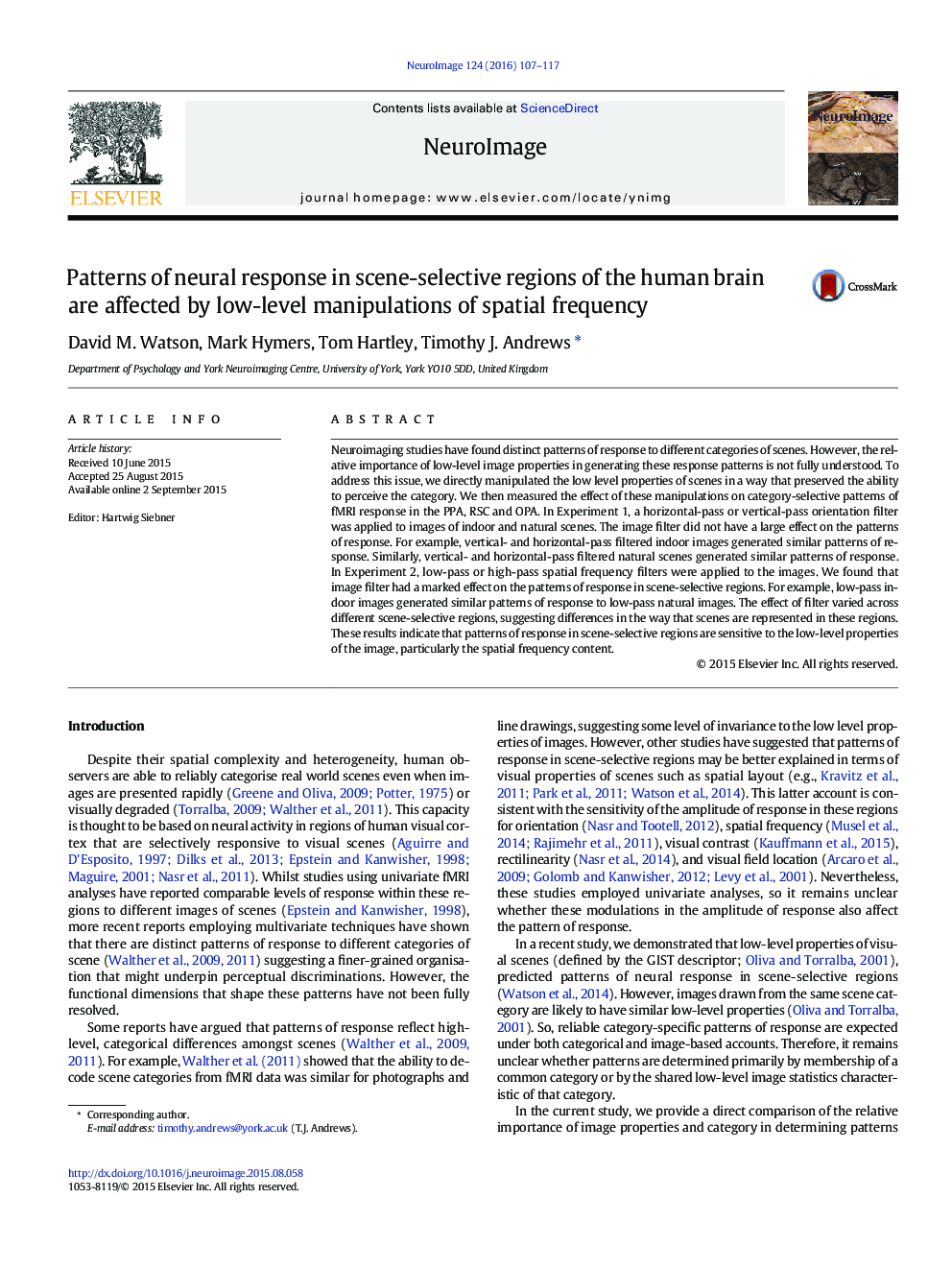| Article ID | Journal | Published Year | Pages | File Type |
|---|---|---|---|---|
| 6024249 | NeuroImage | 2016 | 11 Pages |
Abstract
Neuroimaging studies have found distinct patterns of response to different categories of scenes. However, the relative importance of low-level image properties in generating these response patterns is not fully understood. To address this issue, we directly manipulated the low level properties of scenes in a way that preserved the ability to perceive the category. We then measured the effect of these manipulations on category-selective patterns of fMRI response in the PPA, RSC and OPA. In Experiment 1, a horizontal-pass or vertical-pass orientation filter was applied to images of indoor and natural scenes. The image filter did not have a large effect on the patterns of response. For example, vertical- and horizontal-pass filtered indoor images generated similar patterns of response. Similarly, vertical- and horizontal-pass filtered natural scenes generated similar patterns of response. In Experiment 2, low-pass or high-pass spatial frequency filters were applied to the images. We found that image filter had a marked effect on the patterns of response in scene-selective regions. For example, low-pass indoor images generated similar patterns of response to low-pass natural images. The effect of filter varied across different scene-selective regions, suggesting differences in the way that scenes are represented in these regions. These results indicate that patterns of response in scene-selective regions are sensitive to the low-level properties of the image, particularly the spatial frequency content.
Related Topics
Life Sciences
Neuroscience
Cognitive Neuroscience
Authors
David M. Watson, Mark Hymers, Tom Hartley, Timothy J. Andrews,
